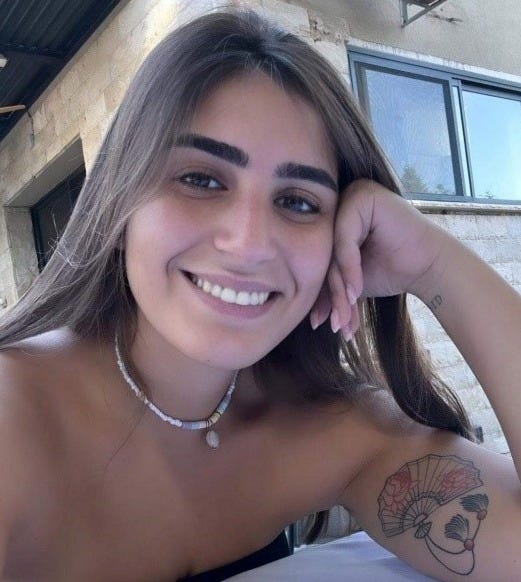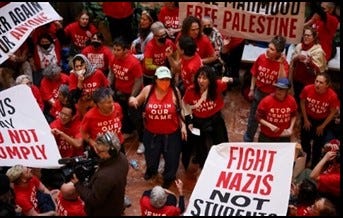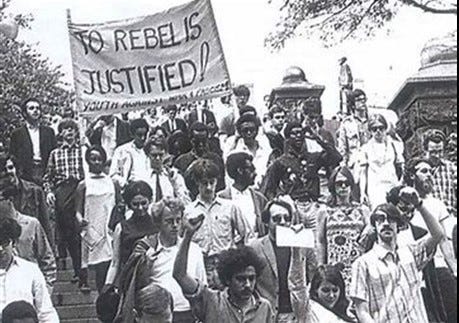On Tuesday, April 30, 1968, late in the afternoon on my way to graduate school at City College, I drove past Columbia University where police barricades had been erected, and cops were directing traffic. Turmoil at Columbia had been making news for months. Now students were occupying campus buildings. Several school administrators were held hostage until the student’s demands were met. Furniture was piled up at the door of the Dean’s office to prevent him from leaving. A student radical wearing sunglasses and smoking a cigar sat in the university president’s chair with his feet up on the desk.
I didn’t get it. I had now been a college student for seven years (Undergraduate, graduate and most summers) and did not feel oppressed; I did not feel my freedom of speech was being violated. The day I drove past Columbia, the police had quashed the demonstrations with tear gas and stormed two university buildings. Seven hundred protestors were arrested, while 132 students, four faculty members and twelve police officers were injured. One police officer’s back was broken when a student jumped from a building and landed on him.
Just the week before, I had approached the City College library to research a sociology paper, but my way was blocked by a demonstration. In those days, campus demonstrations were as numerous as mosquitoes on a hot summer’s night, and just as annoying. A guy with a megaphone was exhorting the crowd to “resist.” Everyone seemed to be enjoying themselves.
“What’s going on?” I asked a guy in the crowd. “An anti-war protest?” No, he said. They were opposing construction of a new classroom building on a grassy area where students liked to congregate, strum guitars, and sit in the shade.
I shook my head as I skirted the mob, making my way to the library. There are lots of things to be angry about, but erecting a new university building was not high on my list. Didn’t they have anything else to do? I was in my second-year teaching at Brandeis High School, an inner-city school with 5000 minority students on triple session. Several times week I drove to City for graduate courses.
The student movement left me with more questions than answers.
What exactly are these students looking for? I wrote in my journal. The kids at Columbia are protesting, but for what? They don’t like capitalism? Are they ashamed of the wealth they have? They say they’re not free, but what does that mean exactly? I feel free, why don’t they? Are they reacting against a world that has relegated them to a number, a cog in a gigantic wheel? Revolution in the midst of prosperity. How will history explain this?
With a half century to answer my own question, and attempting brevity, I’d put it this way: by 1968, a cohort of Baby Boomers craved drugs, sex, rock ‘n roll, culminating in “the Summer of Love” in San Francisco and at Woodstock. Another cohort Boomers craved something intangible, even existential: lives of purpose and meaning. The comfortable post-WW II generation had rarely experienced struggle and suffering; two items they wanted to add that to their eternal resume’s. Going against the established order, speaking truth to power was invigorating and existentially gratifying.
Or to paraphrase Voltaire, If there was no meaning then we must invent it. If there is no struggle, we’ll fabricate it; if we have no devils to defeat, we’ll search until we find some.
And that, in my estimation, is the crux of the matter: young people with nothing to do were looking to manufacture meaning, struggle, acceptance, purpose and camaraderie. They were actors in search of a play, pilgrims in search of a cause. How can we go to classes when the school administration is digging up our field of grass? Power to the people!!
Today’s protests at Columbia are similarly motivated, but with a different focus: In 1968, the struggle was against the war in Viet Nam; in 2025 the “struggle” is against the Israeli “genocide” in Gaza. In 1968 the devils were Lyndon Johnson and the soon-to-be-elected Nixon; today it’s Trump and Elon Musk; in 1968 the US was the selfish, imperialist, racist, capitalist beast to be slain, today the boogie man is the Jews, Elon Musk, Trump, Republicans and racism. In both eras, students had the same motivation: the heady feeling of speaking truth-to-power.
Columbia University, 2025
Last week, I watched reporters roaming around the chaotic Columbia campus, asking students why they were protesting. Many refused to answer. “Talk to the organizers,” they said. I’m guessing the organizers didn’t want low information protestors exhibiting their ignorance, unable to answer questions like:
1. What happened to Israel in 1948?
2. What does your chant, “from the river to the sea” mean?
3. What are the Abraham Accords?
4. Have you read the Hamas Charter?
4. Why do you threaten and harass American Jewish students who have nothing to do with the war in Gaza?
5. What was the Holocaust?
6. What happened on October 7, 2023? Do you approve? Her name was Karin Journo.
Her last words were, "Mom, I love you, they're shooting at us, there are a lot of wounded. Mom, I'm scared to death, save us.”
Her mother said, "I wanted to see her before the burial, to identify her, but the announcer informed us that only three of her teeth were left. We were shocked, her entire body was burned and disintegrated.”
I know how painful this is; for a full report, go to Christopher Messina’s Substack, The Messy Times
SUBSTACK SIDEBAR
Jewish students raised holy hell in the lobby of Trump Tower to protest the arrest and possible deportation of Mahmoud Khalil, a pro-Palestinian activist at Columbia, their red shirts were emblazoned with, “Jews say stop arming Israel.” “Fight Nazis, not students,” they chanted.
Protestor, Sophie Edelhart said she did not want to “cede ground” to Trump and fascism. Amy Goodman wrote, “No Muslim ban ever. We’ve got your back, students. We’ve got your back, Mahmoud. We’ve got your back, Gaza. We’ve got your back, trans people, and more…”
Trans people? In Gaza? Perhaps she is just telling us that she is a sparkling example of human kindness, inclusive of all people, except of course, for the Israelis.
Why are Jewish protestors shrieking with visceral anger against their own people? I really don’t know. With these types of behaviors, I generally assume there is some kind of ego gratification or psychological payoff.
Maybe…
acceptance by leftist students is more satisfying than loving their
own people.
they’ve been indoctrinated by leftist professors.
3. the university bubble is too uniform to accommodate dissent.
4. the hunger for purpose and camaraderie trump logic.
righteous indignation is a powerful, exhilarating drug.
in the warm embrace of the crowd, they absorb its conglomerate
power.
7. when we call ourselves “Rebels,” as in this 1968 banner, we romanticize ourselves.










Another possibility; youth wants war, every generation must have it's war. But they don't really want the real kind. Think of it as their version of gang warfare. Just thinking.